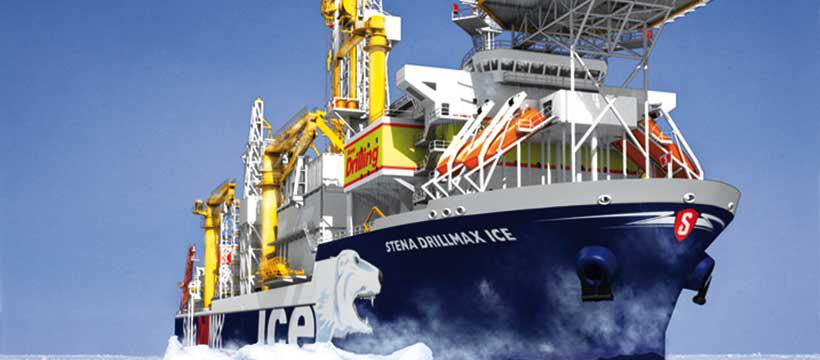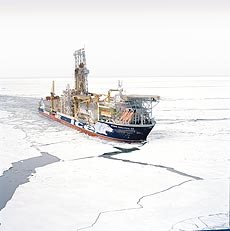Port of Rotterdam’s Throughput Falls Amid Global Tensions
Europe’s busiest port, the Port of Rotterdam, saw a decline of 1.4% in its total throughput in the first quarter of 2024 compared to last year. In total, the port...
The Stena DrillMAX unit is designed for high efficiency & safety, providing the optimum layout for exploration, appraisal & development drilling; and will be winterized up to Polar Class 5.


“DrillMAX ICE IV brings our total fleet to eight units. Our existing Stena fleet consists of four semi-submersibles, which are active offshore Norway, UK, Angola and Australia,” explains Tom Welo, CEO of Stena Drilling.
Market forces
Stena Drilling’s decision to go into the Arctic was heavily influenced by the fact that oil prices were climbing higher and that new discoveries need to be made. Although the oil prices have since dropped, Stena Drilling is still confidently pursuing its multi-billion dollar Arctic strategy.
“The DrillMAX series you see is able to withstand both extreme harsh and cold environments, and it is also designed to operate in ultradeep waters, worldwide. So our investment is able to cover the areas with greatest potential for our clients in an optimum way. If our clients decide that it doesn’t make economic sense to drill in the Arctic in the short term, then we can still put our Drillmax to work in any of the deepwater fields that are entering the production phase as we speak,” says Mr Welo.
Technological advances
Mr Welo has been the CEO of Stena Drilling for more than a decade. He has been at the helm during an era that has seen rapid technological changes taking place, which have enabled companies to overcome environmental challenges. “Our operations in West Africa and Brazil have advanced hugely in recent years because of technological advancements in drilling techniques. These technologies are exactly what will be needed in the Arctic, which shares similar geology,” reveals Mr Welo.


Stena has been at the forefront of developing ice-classed vessels for the past two decades. They have several bulk carriers that were built 18 years ago with the express purpose of going on expeditions to the Arctic. We then developed ice-strengthened tankers for the Baltic. We also have the biggest ice-classed Aframax ship ever built.
Adapting to the environment
“We have not chosen to build a ship that can break ice because the moonpool will be full of ice and the cost would be prohibitive. But we have had to invest heavily in thrusters, they weigh 50% more than on the DrillMAX series, as they have to be ice-classed. So the total additional cost of having an entire DrillMAX adapted for Arctic conditions is somewhere in the region of $220 to $240 million.
The working environment in the Arctic is also very different, so Stena has had to take safety into consideration in a different way than with more conventional vessels. DrillMAX ICE will have an ice-classed “hat” on top of the vessel in order to protect the crew from falling ice, often a problem in the Arctic. Additional features also include heated walkways, de-icing equipment and heated hand rails all around the vessel, so that the crew is protected from the cold.
“Now, Stena is using dynamic positioning on our DrillMAX series, a well-proven technology, which replaces conventional mooring systems. Station keeping is maintained by using multiple reference systems including GPS systems and taut wires as necessary, as tests have shown that GPS can encounter black spots in the Arctic.“
Political risk
The Arctic, of course, comes with a whole set of other challenges, in particular political risk, as its geographical area spans the territories of the USA, Canada, Great Britain, Greenland, Denmark, Norway and Russia.
With projects such as the Barents 2020, in which DNV is helping to write rules relating to the Arctic that both Norway and Russia are assisting with, the potential for offshore exploration and production in the Barents Sea will also be realised.
Join the gCaptain Club for curated content, insider opinions, and vibrant community discussions.


Join the 105,968 members that receive our newsletter.
Have a news tip? Let us know.
Access exclusive insights, engage in vibrant discussions, and gain perspectives from our CEO.
Sign Up




Maritime and offshore news trusted by our 105,968 members delivered daily straight to your inbox.



Essential news coupled with the finest maritime content sourced from across the globe.
Sign Up